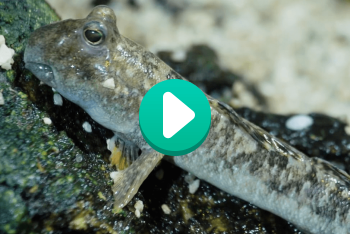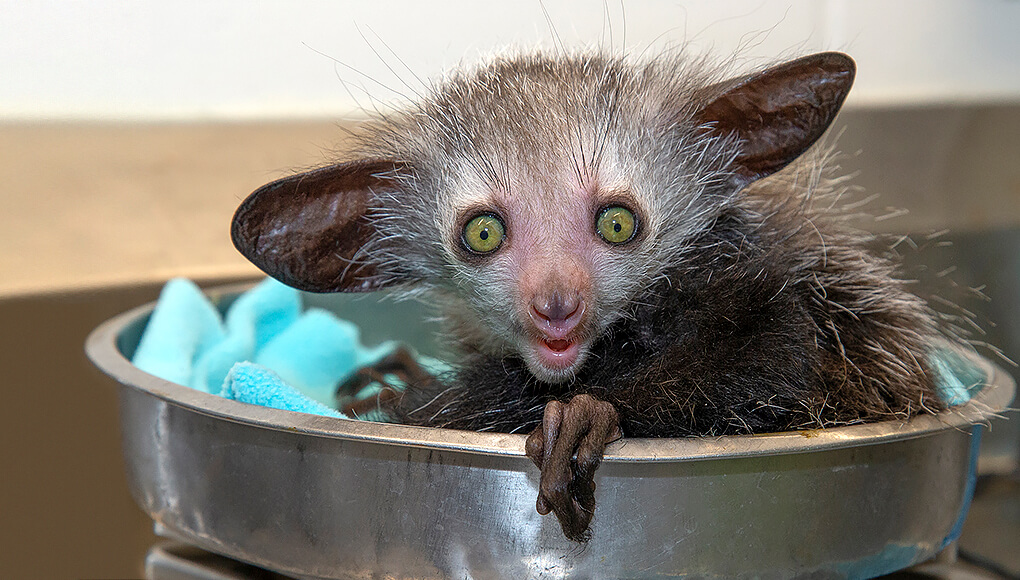
Shadow Watch
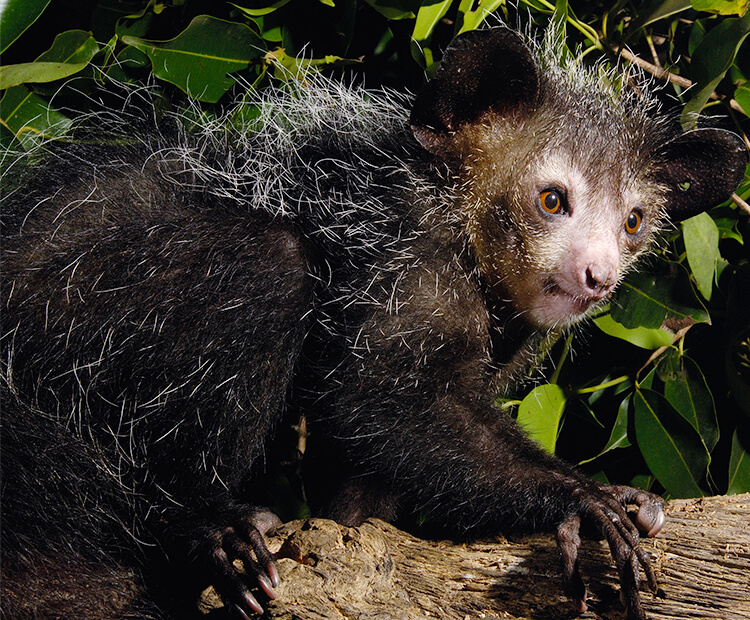
Who Are You?
Have you ever seen an aye-aye? Probably not! In fact, most people have never even heard of these strange-looking, small animals. They are a type of lemur, native only to Madagascar, and are nocturnal and hard to spot in their rainforest home. The San Diego Zoo had two adult aye-ayes, and in July 2019, they had a baby.
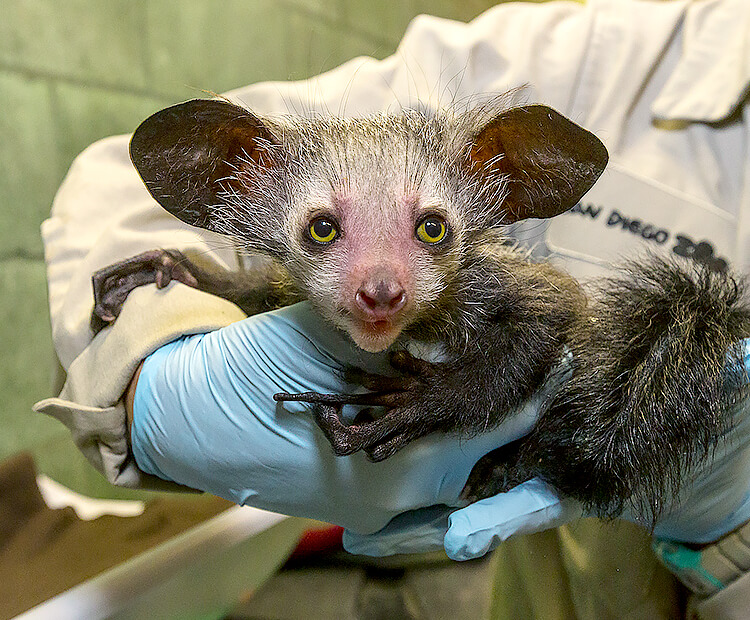
Oh, Baby!
Because aye-ayes are nocturnal, they are often already asleep for the day when keepers start work early in the morning. But one morning, wildlife care specialists found that the female aye-aye, was still awake. Keepers peeked in her nest and found her snuggling and cleaning a newborn baby.
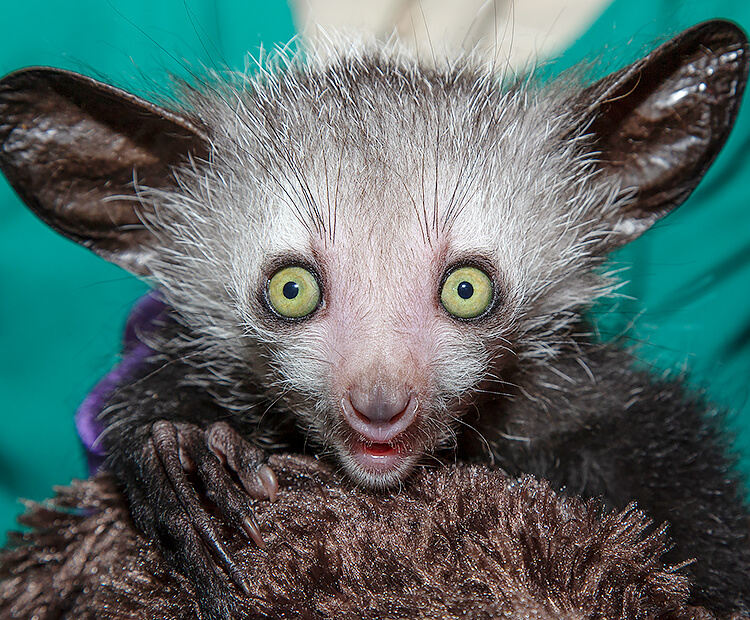
The Name Game
One of the many fun things about being a wildlife care specialist is helping to name baby animals. Often, we like to give a name that comes from the part of the world the animal is from and that has special meaning. For this baby aye-aye, keepers chose the name Aloka. It is a word from the Malagasy language that means “shadow.” It’s a nice name for a nighttime animal from Madagascar!
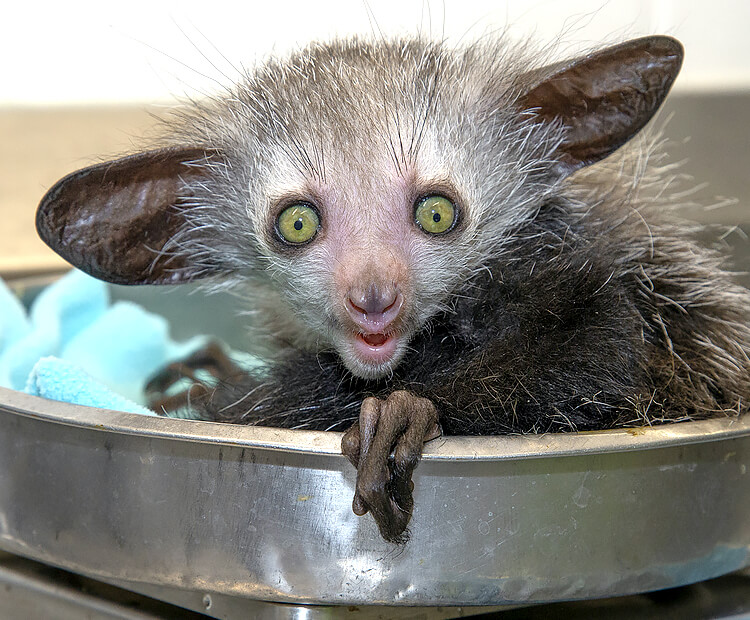
Check-ups
Each day for the first week or so, wildlife care specialists gave Aloka a quick health check every day. They gave the mother a treat while they gently and swiftly picked up the baby, looked him over, and weighed him. Each day he gained a few grams of weight. That told us he was nursing and healthy, which is what we expected.

Growing and Going
After a couple of months, Aloka became one active aye-aye. He spends his time running along branches and logs, leaping from spot to spot, and playing with his parents. He has “quiet time,” too, when he cuddles up with his mom and dad and they groom one another. This is one happy aye-aye family!



